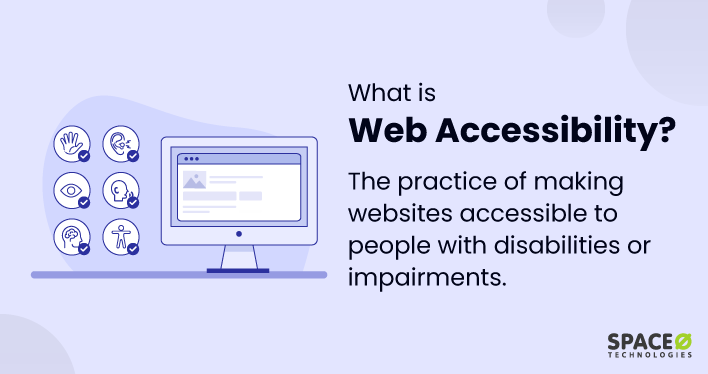0818 Work Insights
Your go-to source for the latest work trends, tips, and advice.
Web Accessibility: Making the Internet a Friendlier Place
Discover how to create a more inclusive web! Unlock the secrets to web accessibility and make the internet friendlier for everyone.
Understanding Web Accessibility: Essential Principles for Inclusive Design
Web accessibility is a crucial aspect of digital design that ensures everyone, including individuals with disabilities, can navigate and interact with online content effectively. To create an inclusive environment, it is important to understand and implement essential principles such as perceivability, operability, understandability, and robustness. By adhering to these principles, designers can make sure that all users, regardless of their capabilities, can perceive information and use websites seamlessly.
Among the key practices for achieving web accessibility is the use of alternative text for images, ensuring clear and concise text, and providing keyboard navigation options. Implementing these practices not only enhances the user experience for individuals with disabilities but also contributes positively to overall SEO performance. Search engines favor well-structured, accessible content, as it improves usability and reach, thereby making it crucial for web designers to prioritize accessibility in their development process.

Top 10 Web Accessibility Mistakes to Avoid for a Friendlier Online Experience
Creating a user-friendly online experience requires attention to web accessibility. Unfortunately, many website owners make crucial mistakes that can hinder access for users with disabilities. One of the most common errors is neglecting alt text for images. This critical attribute helps screen readers convey information about visual content to those who cannot see it. Without proper descriptions, these users may miss vital context, leading to a frustrating experience.
Another significant mistake is creating a site with poor color contrast. Text that blends into the background can be nearly impossible for users with visual impairments to read, further isolating them from your content. To enhance accessibility, ensure that your text offers sufficient contrast against its background. Additionally, using keyboard navigation is essential; making sure all interactive elements can be accessed without a mouse can open your site to a wider audience, including individuals with motor impairments who rely on keyboard shortcuts.
How to Evaluate Your Website's Accessibility: Tools and Best Practices
Evaluating your website's accessibility is crucial for ensuring all users can effectively interact with your content. Start by utilizing a variety of tools designed to assess accessibility. Tools like WAVE, Axe, and Lighthouse can automatically identify common accessibility issues such as missing alt text for images or improper heading structures. Once you've run these evaluations, compile a list of identified issues, which can guide you in implementing the necessary best practices for improvement.
In addition to automated tools, it's essential to perform a manual audit of your website. This includes navigating your site with a keyboard or a screen reader to ensure all functionalities are available without a mouse. Engaging users with disabilities in testing can also provide valuable insights into their experiences and challenges. Consider following established accessibility guidelines, such as the Web Content Accessibility Guidelines (WCAG), to create a robust accessibility strategy.